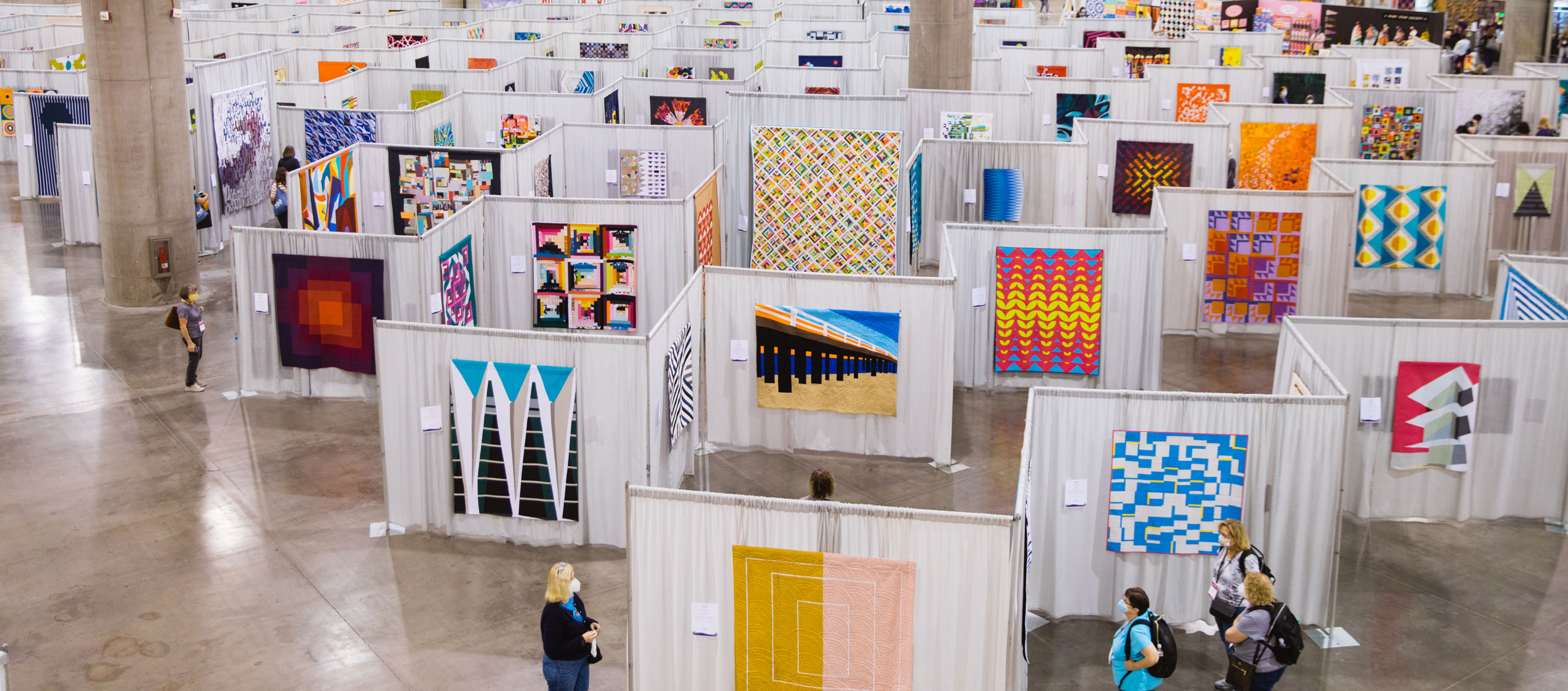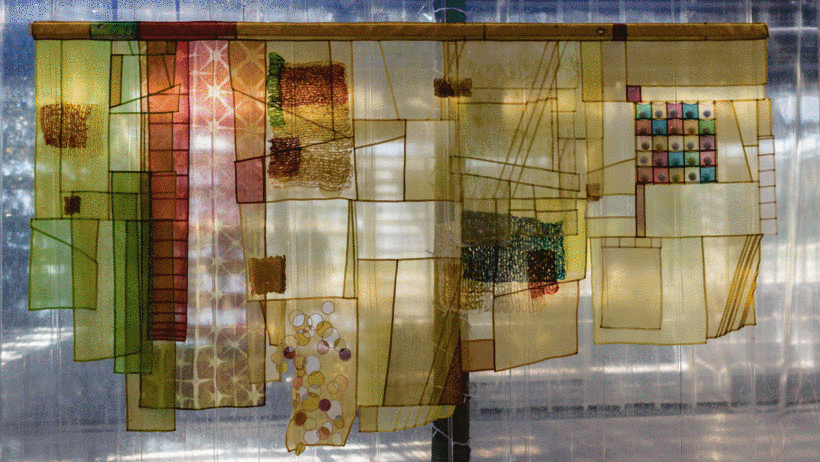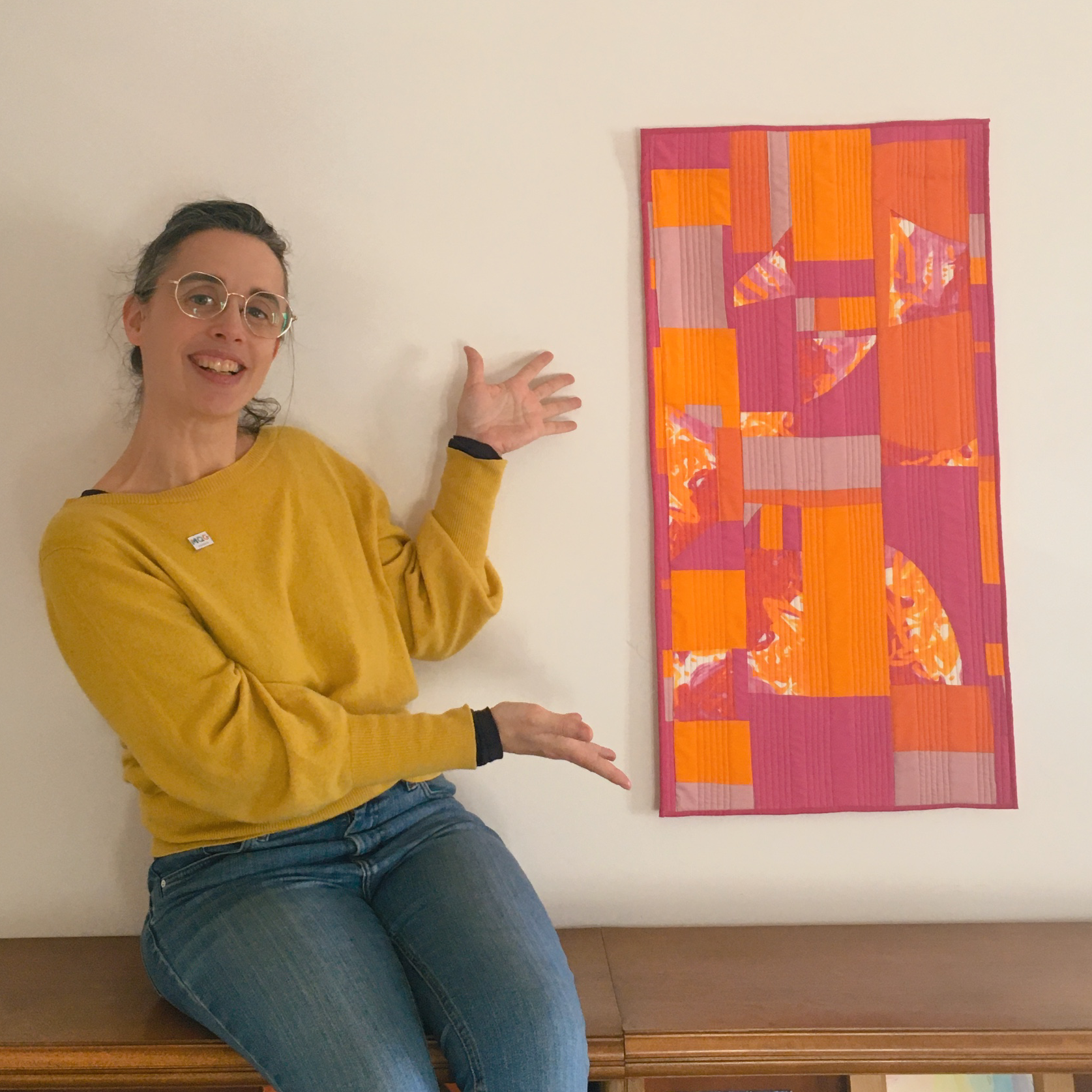Process¶
My process is basicly my project. I will detail here the path taken from January to March 2023
Patchwork inspirations and basis¶
Patchworks and quilting books¶
The modern quilt guild¶
 This picture is for QuiltCon the Modern Quilt Guild annual enconter. a lot of quilter people I follow on instagram are part of the guild and I find their way to see quilting and patchwork very open :
This picture is for QuiltCon the Modern Quilt Guild annual enconter. a lot of quilter people I follow on instagram are part of the guild and I find their way to see quilting and patchwork very open :
Modern quilts are primarily functional and inspired by modern design. Modern quilters work in different styles and define modern quilting in different ways, but several characteristics often appear which may help identify a modern quilt. These include, but are not limited to: the use of bold colors and prints, high contrast and graphic areas of solid color, improvisational piecing, minimalism, expansive negative space, and alternate grid work. “Modern traditionalism” or the updating of classic quilt designs is also often seen in modern quilting. (from the Modern Quilt Guild website)
The Guild also offer to member its resource library and a lot of tips :)
Yeah! I'm now a MQG member!
Bojagi class¶
As i wanted to learn more about patchwork, I discovered the korrean patchwork called bojagi or pojagi. I really like Desedamas works

And decided to take their course on domestika:
I done a small sampler with some synthetic fabrics scraps I got home.
Experimenting textile arts¶
Spray Bojagi¶
I really love the light playing with the fabric in the korean patchwork. I tried to give it a modern touch with cotton organdi painted with green spray.
Basics patchwork and hand quilting¶
My very first improv quilt was done with the scrap of our Biochromes week biochromes week and some of my own scraps. I enjoyed the process of going slowly and hand quilting.
Improv curves¶
I follow a Sherrilynn Wood quilt-classe to learn how to improv curves.
First machine quilting¶
For my first try I choose to make some straight lines, it was easy and smooth.
 I would like to get some more elaborate quilt design, sadly my sewing machine has no free quilt foot so are the sewing machine of the Textile Lab.
I would like to get some more elaborate quilt design, sadly my sewing machine has no free quilt foot so are the sewing machine of the Textile Lab.
Trying to vectorise the quilting¶
Because I have no acces to a long arm quilting machine, I prepare my vector on inkscape to print it and quilt it following the paper. I find it pretty long and complicated.
Fabrics bleaching¶
In week04, we die a lot. I got the posibility to get some linen scraps, I would love to use them in my final project. First, I wanted to multiplicated the range of colors. My first think was to take out some colors instead of adding some colors. Here are some examples of bleaching.
I didn't wanted to quilt them to keep the gradient as strong as possible.
Linen quilting I¶
Because I really would like to quilt these linen and make a small test.
It was pretty hard, I got the feeling to fight the fabric to ge it done. I will have to make a quilt with bigger pieces and find a powerful iron and a more strong sewing machine.
Linen quilting II¶
Thanks to Troy suggestion on midterm, I decided to start cutting the fabric with the laser. the pieces were big to get it easier. I didnt plan something speacial, willing to have an improv "something"... I finally end up with a modular carpet.
linen applique¶
While I was working in the laser I thought of the possibility to cut linen for illustration and applique. I'd started working with the AI Midjourney in february and decide to start from a Midjourney illustration.
Quilted illustration¶
With the same illustration, I made a stencil to spray paint some quilted fabric (Scratch from furnitures factory).
Changing my mind¶
I start with the "Verdures" subject and finish with 3 months of experimentation. I'm glad to change my mind on the midterm. It was a wonderfull journey! I gave myself the time to try and to experiment. It was really playfull.